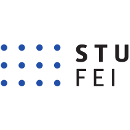Deadline of this assignment is set to: 2019-03-15 20:00:00
1. Task: Centrifuge
Centrifuges are used in research, industry and even in medicine. For instance, they perform a useful work in laboratories investigating blood samples, where they help separate invidividual blood components. You have probably saw a centrifuge operating in a washing machine at home or your laundry service spinning the clothes, extracting water to help them dry faster.
Task: build a working model of a centrifuge for extracting water from clothes.
Demonstrate your solution: take three pieces of paper three-ply handkerchiefs and dunk them one after another in a measuring cup with a known volume of clean water (for example 300 ml), and then place all of three of them into your centrifuge robot, which should extract as much water from the handkerchiefs as it gets by spinning them. Measure the volume of the remaining water in the cup in order to determine the amount of water that has been soaked by the handkerchiefs (V1). Collect the extracted water again into a measuring cup (V2) and determine and document the volume of water that remained in the handkerchiefs (V1 - V2). The goal is to minimize this volume. Use no more than 30 seconds of active motor action. When evaluating your solution, we will consider its overall quality as well as the remaining water volume. Restriction: use no more than two motors!
2. Task: Food delivery
25 robots have been recently put into work at George Mason University in Virginia (USA). Their purpose is to deliver food to students based on their orders to any wished locatoin within the campus. The students use a mobile phone application to order the food and apply a pin code to unlock the food from the robot after the successful delivery.
Task: Build a robot for food delivery. The robot will have a locked box that will open after entering a proper binary code on the LEGO control unit. It will be capable of delivering the food to at least three different locations. You can design any kind of navigation as you find suitable. The delivery destination will be selected by the cook. He will first place the food inside of the box, then type in the one-time unlock code, and finally enter the destination location. The robot will then drive to the destination to deliver the food and return back to the kitchen afterwards.



